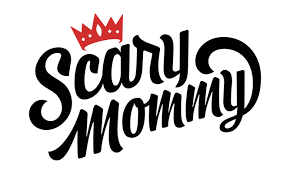Feeling Left Out of the Holidays?
Following Thanksgiving, we rush into the holiday season. Christmas music starts playing on the radio (in some places even before Thanksgiving). Lights go up on people’s houses, and our mailboxes overflow with mail that doesn’t actually go straight into the recycling bin, as in, holiday cards. It’s a fun, cheerful time of year—and a season that can be oddly stressful if your life doesn’t align with the perfect photos on those cards.
As much as I enjoyed seeing the family photos and reading the good news about those I knew, during June’s first year, getting holiday cards also made me feel sad. It looked like I was the only one going through a difficult time, like no one else had an ailing child, a little girl we worried might not get better. Seeing beautiful, ideal families could also trigger feelings of fear, anger, and/or exclusion. It’s not like I expected others to go out of their way to avoid celebrating for fear of making me unhappy. Not at all! I want everyone to have much to celebrate. But while I was happy to receive cards, I also felt bad about it. The holidays were like the tinsel-dripping, gift-wrapped version of the feeling of “no good choices” I’d been facing off and on all year.

Even though it’s the opposite of the spirit of the season, the traditions at this time of year can make many of us inadvertently compare ourselves to others, and see our own lives as falling short in one way or another. For some parents of children with neurological conditions, sending cards can be the more challenging task. Amy, the mother of an 11-month-old daughter with a neurological disorder due to a chromosomal deletion, says she’s really been struggling to capture a happy, funny moment that feels “right” for a holiday card. “I’m not ashamed of Marlie by any means, but she’s not the kid who’s going to be super smiley for pictures. That’s not how she reacts. It’s just difficult for me to capture the happy moments,” she says.
Amy works as a pediatric nurse at St. Louis Children’s Hospital. She’s currently in interventional radiology and previously worked in the cardiac intensive care unit. She’s certainly no stranger to health tragedies children face, and to the toll it takes on their parents. Despite her discomfort this time of year, she says that one bright spot in her experience with Marlie is the way that it has helped make her a better nurse. “I can relate to parents in a way I never could before,” she says.
The fun events that happen this time of year can be a real hurdle for other parents. Erin is a speech therapist outside St. Louis, and the mother of a four-year-old named Gwen who has a terminal neurological disorder. Erin says that this holiday season, she’s having to skip activities like breakfast with Santa, because the progression of Gwen’s disease makes it too difficult to attend. The same is true with holiday concerts. While she would never wish to diminish anyone else’s joy, she admits that she feels envious of other families who can participate in these activities. “As much as I hate to say that, it’s true. It’s all the holidays, actually, Halloween and Easter, too.”
Gwen’s birthday is actually the hardest for Erin. This year, anticipating the challenge of Gwen’s birthday for them, Erin and her husband, Mark, decided to find a way to make the day happier for others, and more meaningful. They started what will be an annual event called “September Smiles.” Family and friends donate to a fund they’ve set up that allows Erin and Mark to purchase care packages and gift cards for all the local families with children on hospice or palliative care. I was so inspired to hear about this fund and the way that Erin and Mark decided to cope with and find joy in an otherwise difficult day. It’s one thing to mentally prepare for an emotional day, but another to plan an event that brings happiness and comradery to others.
***
After June passed away, my relationship with the holidays changed. Sending cards took more thought and a lot of second-guessing. For the first two years, we did send out cards, but it was hard to figure out what to say and what to show. June wasn’t with us anymore, but she was in our hearts. We wound up holding up a photo of June for the card. I don’t think I could have attempted a family photo without including a picture of her.
Alicia, one of the first moms I met after June started having infantile spasms, lost her daughter, Mya, two years ago, just short of her seventh birthday. One of a set of triplets, Mya had serious health issues associated with twin-to-twin transfusion syndrome. Nearly everything about the winter holidays felt isolating when Mya was alive. “Often, when her health wasn’t the best, we had to navigate which events to attend as a family and which to split up for so that she could stay home where we had better equipment to handle her care,” Alicia says. After Mya passed away, the holiday card part was confounding. “I did not send a card last year even though I wanted to. I was trying to figure out how to include her in the card, and I just couldn’t figure it out. We will never just be a family of four,” she says. Still, she received cards, of course, which kind-of made her omission stand out more. “It felt weird not to reciprocate.”

I thought about the moms I’ve met along the way when sending out our cards this year. This is third Christmas we’ve celebrated without June. This past year has also been one of the first years in a really long time that I’ve felt truly happy. Nothing really bad happened, and we did so many exciting things and have formed great memories. I was enthusiastic to share a card this year, one showing our family, without anything on it that would make others feel sorry for us. This year, it felt okay to let the photo of June go, but I wanted to include her somehow. We decided to stand around a ladybug garden flag. That felt good to me. It was a more subtle way to show her presence. Still, before we sent them out, my husband, Matt, and I questioned whether or not to include her name. Did including June’s name detract from the happiness I wanted to share? Would it “remind” people to have sympathy for us? On the other hand, would not mentioning June seem to suggest we’d forgotten her? In the end, we decided to sign the card with our names and the names of our two boys, and then add, “and always June.” She is always there with us, and that fact is something we feel happy about, too.
This is my first-in-a-very-long-time happy card. I hate to imagine any other parents feeling bad receiving it. I know a few moms who have lost a child, and are new to this type of grief. I hope that our happy card says that, no matter what is happening right now, there will be a time when they’ll feel full of joy again, and want to share their good news with others.
***
When going through a really hard time, I always find it helpful to focus on the small things I can do, and the little ways to make things better. The fact is, we often can take little steps that actually make us feel far more included and present during the holiday season (and all year). Here are some ideas:
Arts and Crafts for All of Us.
A lot of moms talk about how their children can’t make a gingerbread house. But who decided that gingerbread house decorating was an essential part of the holiday? They never really hold together anyway, and no one wants to eat something a five-year-old makes by licking gumdrops to make them stick. There are other craft projects that all kids can do. I am grateful for the people in our lives like the therapists and teachers who helped us make the holidays fun. One always came with some sort of craft that we could do, using June’s hand and foot prints. Those always feel special and are something all kids can do. You can buy do-it-yourself clay molding kits for hand/foot print keepsake ornaments at Target or Walmart. You can also pick up some non-toxic paint at a local craft store or on Amazon and use it to make artwork, cards or ornaments.
Invite Santa to your house.
Why stand in line at the mall? Erin told me that she hired a Santa to come to her house! I found that so encouraging. Now why didn’t I think of that?! (Probably because it’s hard to think creatively when you’re dealing with a child with such struggles.) But you can host your own Santa, invite over friends over, turn on holiday tunes (sing along), and take your own photos.
Transform struggle into support.
We can all take a cue from Erin and Mark. It doesn’t have to be a grand event, but finding ways to help others does just as much (if not more) for the giver than for the receiver. Is there a family you’ve met in a support group or hospital stay? Maybe you could send cookies or a note to help brighten their day. Think about what you like to give and what others might really enjoy receiving.
Focus on What Works for You.
Send or don’t send, mention them or not: Do what feels right for you and your family. No one is judging you. (If they are, that’s actually more about them than you, anyway.)
Look for the Good.
As Alicia reminded me when I spoke with her, there is always something beautiful even in tragedy. When describing children like Mya and June she said, “I like to think of them as medically marvelous,” as opposed to the often coined term, “medically complex.” What we say to ourselves about our life and our current situation affects our outlook. Try to focus on something good, and if that’s too difficult, put a positive spin on it!
Just skip it.
Can’t bear another holiday season at home? Don’t. Take your family somewhere else for the holidays and do something totally different from the typical celebration.
Changed your mind?
You can always send out a “Happy New Year” card in early January!
What do you do to feel a part of the season? Write us and let us know.







